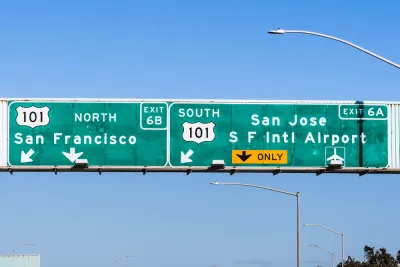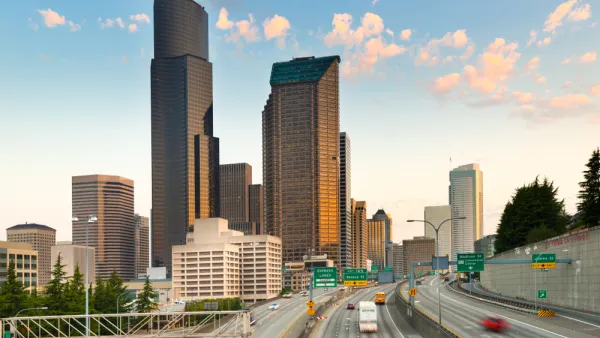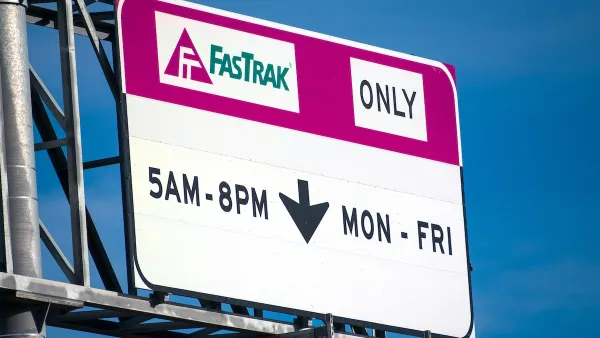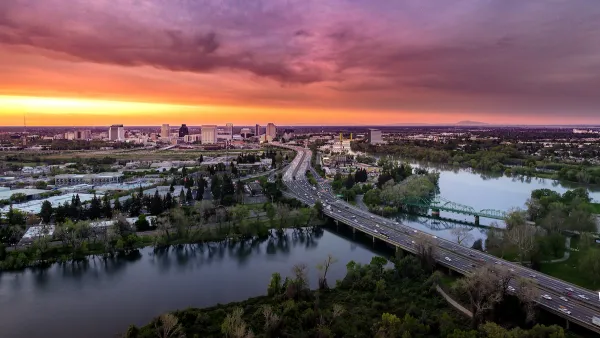Induced demand strikes again.

A two-phase project to add capacity to Highway 101 where it crosses the San Francisco Peninsula spent $600 million and so far has accomplished no progress on congestion, according to a recent article by Roger Ruddick for Streetsblog San Francisco.
The first phase of the project opened in February 2022, with the second phase opening in March 2023. According to locals, however, congestion on the stretch of highway between San Bruno and Palo Alto is unchanged, however.
Rudick quotes Mike Swire, a Peninsula advocate and member of the Citizen’s Advisory Committee of the San Mateo County Transit Authority, who describes the congestion on Highway 101 as only getting worse. "At what point do we stop doing something we know isn't working?" asks Swire in the article.
The project spent $600 million to add Express Lanes along the 15-mile stretch, one of two direct freeway connections between San Francisco and the Silicon Valley. The article characterizes the widening of little to no avail as a repetition of a theme in California.
“This is a continually repeating pattern with freeway widening projects: think of the Oakland Alameda Access Project, a project to massively increase the size of a ramp complex in South San Francisco, or the widening of Los Angeles's 405 freeway, or many other freeway widening and road capacity projects,” writes Rudick of the ability of induced demand to overwhelm all automobile infrastructure capacity in the Bay Area.
It must be noted that no data to back up the figures about congestion on Highway 101 are included.
FULL STORY: Not a Surprise: 101 Freeway Widening Shows Negative Results

National Parks Layoffs Will Cause Communities to Lose Billions
Thousands of essential park workers were laid off this week, just before the busy spring break season.

Retro-silient?: America’s First “Eco-burb,” The Woodlands Turns 50
A master-planned community north of Houston offers lessons on green infrastructure and resilient design, but falls short of its founder’s lofty affordability and walkability goals.

Delivering for America Plan Will Downgrade Mail Service in at Least 49.5 Percent of Zip Codes
Republican and Democrat lawmakers criticize the plan for its disproportionate negative impact on rural communities.

Test News Post 1
This is a summary

Test News Headline 46
Test for the image on the front page.

Balancing Bombs and Butterflies: How the National Guard Protects a Rare Species
The National Guard at Fort Indiantown Gap uses GIS technology and land management strategies to balance military training with conservation efforts, ensuring the survival of the rare eastern regal fritillary butterfly.
Urban Design for Planners 1: Software Tools
This six-course series explores essential urban design concepts using open source software and equips planners with the tools they need to participate fully in the urban design process.
Planning for Universal Design
Learn the tools for implementing Universal Design in planning regulations.
EMC Planning Group, Inc.
Planetizen
Planetizen
Mpact (formerly Rail~Volution)
Great Falls Development Authority, Inc.
HUDs Office of Policy Development and Research
NYU Wagner Graduate School of Public Service





























